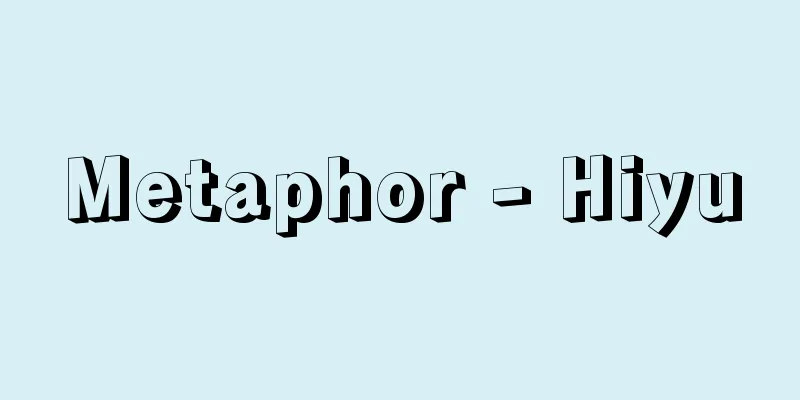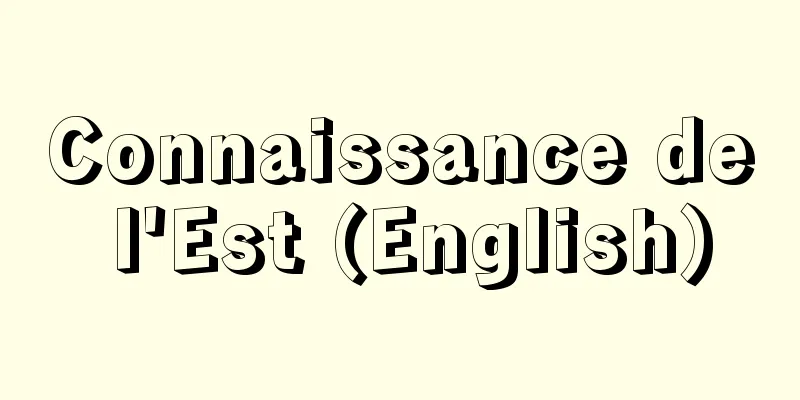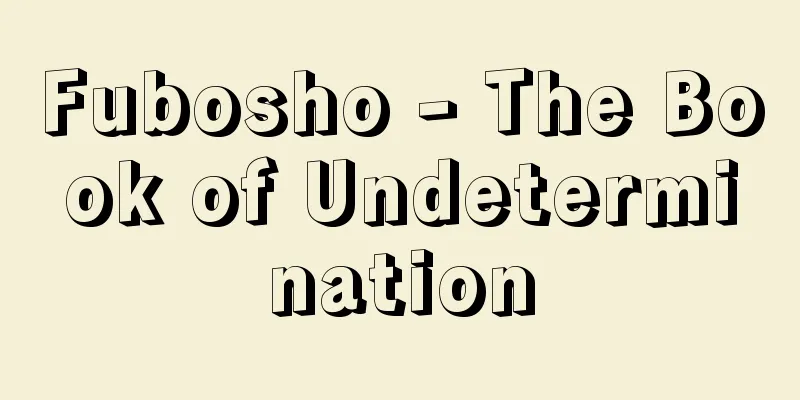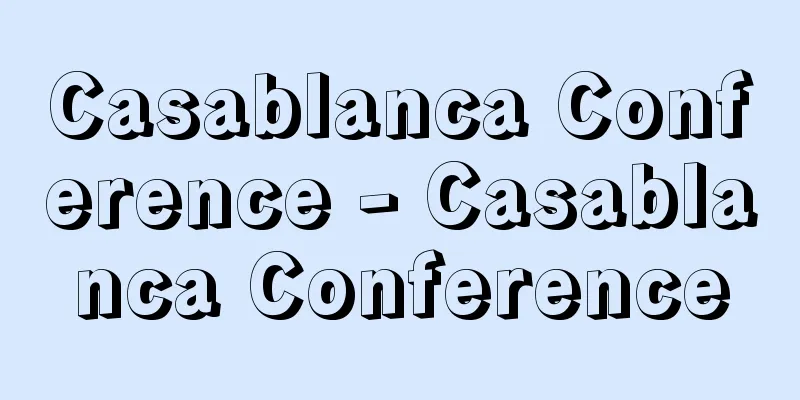Metaphor - Hiyu

|
A method of expression that aims to achieve an effect by comparing what you want to say to something. For example, "Life is like the scent of blooming flowers" (Tatsuo Hori, "The Wind Rises"). A metaphor consists of three elements: (1) the thing being likened, (2) the thing being likened, and (3) the act being likened. Depending on the extent to which these three elements are expressed in words, they can be classified into three types: simile, metaphor, and allusion. A direct analogy is when all three of (1), (2), and (3) are verbalized, as in "(2) eyes like (3) a lake deep in the mountains reflecting only the stars " (Okamoto Kanoko, Spring). The act of likening in (3) is verbalized in the word "like," which shows that it is a metaphor. In this way, the fact that it is a metaphor is clearly shown through the words, so it is also called a clear metaphor. It is the most easily understandable metaphor. A metaphor is when only (1) and (2) are verbalized, while the words and phrases that indicate that (3) is an analogy are hidden, as in "(2) Her eyes were (1) the bewitchingly beautiful glowworms floating on the waves of twilight." (Yasunari Kawabata, "Snow Country"). This is also called a metaphor. Since (3) is not verbalized, (1) the analogy and (2) the thing it is likened to are directly connected, creating a layered effect like a double exposure in a photograph. A metaphor is when only the thing being compared (1) is verbalized, such as "(1 ) a frog in a well does not know the ocean ." The thing being compared (2) is hidden behind the scenes, so when used as a moral or satire, it is easy for the listener to understand and is effective. It is also called an allegory. Works such as "Aesop's Fables" are lengthy metaphors, as they completely replace the human world with the animal world, conceal what the author really wants to say, and do not indicate at all that they are allegories. Metaphors are a common form of expression used throughout history, in all parts of the world, and regardless of the difference between poetry and prose or the literary genre. By using metaphors, you can vividly depict the subject you want to express with a concrete image. [Yamaguchi Nakami] Source: Shogakukan Encyclopedia Nipponica About Encyclopedia Nipponica Information | Legend |
|
いいたい事柄を何かに例えることによって、効果を期待する表現方法。たとえば、「花咲き匂(にお)うような人生」(堀辰雄(たつお)『風立ちぬ』)というような表現である。 比喩は、(1)例える事柄と(2)例えられる事柄と(3)例える行為との三者から成り立つ。これら三者が、どの程度ことばとして示されるかによって、直喩・隠喩・諷喩(ふうゆ)の3種に区別できる。 直喩は、「(1)星ばかり映して居る深山の湖(3)のような(2)眼」(岡本かの子『春』)にみるように、(1)(2)(3)の三者がすべて言語化している場合である。(3)の例える行為は、「のような」という、たとえであることを示すことばとなって言語化されている。このように、たとえであることが、ことばによって明らかに示されているので、明喩(めいゆ)ともいう。もっともわかりやすい比喩である。 隠喩は、「(2)彼女の眼は、(1)夕闇の波間に浮ぶ、妖しく美しい夜光虫だった。」(川端康成(やすなり)『雪国』)にみるように、(1)(2)だけが言語化され、(3)のたとえであることを示す語句が隠されてしまう場合である。暗喩ともいう。(3)が言語化されないので、(1)たとえと(2)例えられるものとが直結し、写真の二重写しのような重層効果をあげる。 諷喩は、「(1)井の中の蛙(かわず)大海を知らず」のごとく、(1)の例える事柄しか言語化されない場合である。(2)の例えられている事柄が、裏面に隠されているので、教訓や風刺に用いると、相手の耳に入りやすくなり、効果的である。寓喩(ぐうゆ)ともいう。『イソップ物語』などの作品は、人間の世界を動物の世界にそっくり置き換え、真にいいたいことを隠し、さらに、たとえであることもまったく示さないので、長大な諷喩である。 比喩は、古今東西を問わず、また韻文・散文の違いや文学ジャンルの違いなどにかかわりなく、広く一般的に用いられる表現方法である。比喩を用いると、表現したい事柄を、具体的なイメージを伴って、生き生きと描き出すことができる。 [山口仲美] 出典 小学館 日本大百科全書(ニッポニカ)日本大百科全書(ニッポニカ)について 情報 | 凡例 |
Recommend
Red-tailed macaque (Cercopithecus ascanius)
A species of primate in the Cercopithecidae family...
50 sounds - Gojuonzu
A chart showing 50 kana characters arranged verti...
Bakst - Bakusuto (English spelling) Léon Bakst
A Russian painter and stage designer. His real na...
Snack - snack
Eating something other than the three meals a day...
Large-leaved Hosta - Large-leaved Hosta
→ Hosta Source : Heibonsha Encyclopedia About MyPe...
Banned - Hakkin
This is the abbreviation for the so-called sale a...
Rabbi Isidor Isaac
Born: July 29, 1898. Limanov [Died] January 11, 19...
Moving Intensive Care Unit
… This is the common name for an ambulance. It is...
Hirota [village] - Hirota
A village in Iyo District, central Ehime Prefectur...
curvilinear coordinates
...The coordinates of the center of gravity on a ...
3-Quinuclidinyl benzilate
…Both are called tear gases, and are stimulants a...
Egaku - Drawing
… [Situation and position] [Terrain] A province i...
Pharyngeal sound - intoon (English spelling) pharyng(e)al
A sound that is articulated between the base of th...
Military nurse - 1911 military nurse
A nurse who is part of the military's chain of...
Spondylus regius cumingii (English spelling) Spondylusregiuscumingii
…[Tadashige Nabe]. . … *Some of the terminology t...









